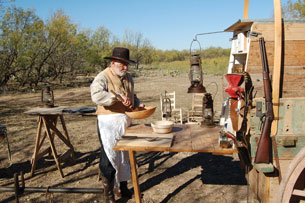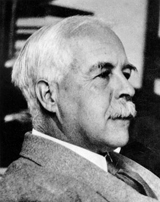Module 2 Intro
1. Module 2 Intro
1.3. Lesson 1 Intro
Module 2—Chemical Compounds
Lesson 1—Bonding Theory and Lewis Formulas
 Get Focused
Get Focused

© Loneburro/iStockphoto

© Robert Churchill/iStockphoto
What a difference a century can make, especially when you consider the kind of equipment used to live outdoors. If you compare the two pictures, you can see the influence that chemical technologies have had. In the previous module you learned that many chemical compounds are used to make products. These chemical technologies are often related to the bonding of substances.

Courtesy of The Valley Library, Oregon State University
In the early 1900s, many scientists were asking questions regarding the bonding within chemical compounds. One of the key figures in this discussion was American chemist Gilbert Lewis. In this lesson you will learn about Lewis’ theories and how to represent the arrangement of electrons when atoms bond.
Essential Questions
- What models are used to describe the bonding between atoms in molecular compounds?
- Can information contained within the periodic table be used to support and explain bonding theories?
 Module 2: Lesson 1 Assignment
Module 2: Lesson 1 Assignment
In this lesson you will complete the Module 2: Lesson 1 Assignment. Save a copy of the Lesson 1 Assignment to your course folder. You will receive more information about how to complete the assignment later in this lesson.
The other questions in this lesson are not marked by the teacher; however, you should still answer these questions. The Self-Check and Try This questions are placed in this lesson to help you review important information and build key concepts that may be applied in future lessons.
After a discussion with your teacher, you must decide what to do with the questions that are not part of your assignment. For example, you may decide to submit to your teacher the responses to Try This questions that are not marked. You should record the answers to all the questions in this lesson and place those answers in your course folder.